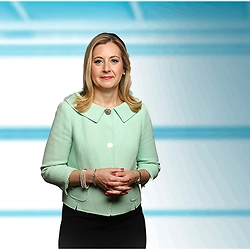The Foreclosure Landscape in the United States: Taking Stock and Looking Ahead
As we all know, the world came to an abrupt standstill in March 2020 due to the global pandemic. Among the many business disruptions in the United States, the world of loan servicing, foreclosures, and mortgage collection activities was halted both by local regulations and orders and at the federal level by the Coronavirus Aid, Relief, and Economic Security Act (the "CARES Act"), enacted on March 27, 2020. (See https://www.govinfo.gov/content/pkg/PLAW-116publ136/html/PLAW-116publ136.htm.)
The relevant CARES Act provisions not only put a pause on foreclosures already pending and in the pipeline, but new foreclosures and collection activities. For obvious reasons, these provisions were intended to allow homeowners and borrowers (as well as tenants) to stay safely in place during the pandemic without fear of foreclosure or other displacement. In addition to the CARES Act, many state and local governments, as well as local courts and other governmental bodies and local municipalities, further expanded protection to owners and residents and stayed foreclosure proceedings or other actions that would advance foreclosures or displacement of residents.
In addition to broadly pausing foreclosure and collection activities, the CARES Act also mandated forbearance options for those borrowers experiencing COVID-19 related hardships. (See id. § 4022.) For the next year, as the pandemic persisted, the moratorium and forbearance plans under the CARES Act were extended, as were many local protections throughout the country.
In March 2021, a year after the CARES Act was enacted and the initial protections and stays were put in place, the Mortgage Bankers Association conducted a survey and estimated that 2.5 million borrowers still were enrolled in some type of forbearance program, i.e., approximately 4.96% of borrowers with residential mortgages in the United States. (See https://www.mba.org/news-and-research/newsroom/news/2021/03/29/share-of-mortgage-loans-in-forbearance-decreases-to-4-96-percent-x278244.)
As we enter the third quarter of 2021 and the country is reopening, there have been certain expectations in the mortgage banking field that collection and foreclosure activities would be advancing, and we are all looking ahead to what comes next for those loans that are in foreclosure, default, and forbearance as well as loans on the precipice.
First, mortgage servicers must take stock of the backlog of incomplete foreclosures that were pending before March 2020. At the end of 2019, before the pandemic, national delinquency rates on owner-occupied residential mortgages were at a twenty-year low – approximately 250,000 or 0.4% of residential mortgages were in some stage of foreclosure. (See https://www.inman.com/2020/03/10/delinquency-rates-keep-dropping-remain-at-record-lows/.) This is well below the normal delinquency rate of around 1%. (Id.) Nevertheless, these cases have been dormant for a year and a half, and there will be pressure from many sides, including the courts, to bring them to resolution.
On top of this backlog, lenders and servicers must now address new defaults and mortgages coming out of forbearance. While some are having flashbacks to 2008, when 4% of residential mortgages were in foreclosure, most experts do not expect we will approach anywhere near those volumes this time. One key difference now is that home values have continued to increase throughout the pandemic, and combined with favorable interest rates, many options for refinancing and loan modifications are available.
However, just as we are looking ahead and lenders are trying to plan for the future and this backlog, comes word of a new proposed rule from the Consumer Financial Protection Bureau that would severely limit or ban foreclosures until 2022, with the aim of curbing the impact on borrowers who have been financially affected by COVID-19 and preventing at least some foreclosures that may otherwise be filed against those borrowers. In April, the CFPB issued a proposed rule that would amend Regulation X, which generally regulates servicing of mortgages and loss mitigation. See "Protections for Borrowers Affected by the COVID-19 Emergency Under the Real Estate Settlement Procedures Act (RESPA), Regulation X," 86 Fed. Reg. 18840 (Apr. 9, 2021), available at https://www.federalregister.gov/documents/2021/04/09/2021-07236/protections-for-borrowers-affected-by-the-covid-19-emergency-under-the-real-estate-settlement. The CFPB's comment period on the proposed regulations ended on May 10, 2021, so it is safe to say that the amended regulation could be promulgated any day now.
The proposed regulation – with a proposed effective date of August 31, 2021 – would create several significant temporary restrictions for mortgage servicers. First, the regulation would "generally prohibit servicers from making the first notice or filing required by applicable law for any judicial or non-judicial foreclosure process until after December 31, 2021." 86 Fed. Reg. at 18841 (emphasis added). See also id. at 18879 (prohibiting servicers from initiating foreclosures until both after the borrower has been delinquent for 120 days and after December 31, 2021). This would apply to all residential mortgages, whether privately or publicly owned. Assuming servicers do not initiate any foreclosure actions until January 2022, this prohibition should not create any potential foreclosure defenses for borrowers.
Second, the regulation would impose several temporary pre-foreclosure servicing and loss mitigation requirements that could create headaches for servicers who are seeking to foreclose.
COVID-19-related "live contact." Regulation X already requires servicers to make "live contact" (or a good faith effort to make "live contact") with delinquent borrowers before the 36th day after delinquency and then no later than 36 days after every payment due date as long as the borrower remains delinquent, and in that "live contact," the servicer must inform borrowers of the availability of loss mitigation options. See 12 C.F.R. § 1024.39(a). "Live contact" means speaking on the telephone or in person with a borrower (whether the contact is initiated by the servicer or the borrower), but not leaving a recorded phone message.
The proposed rule would add 12 C.F.R. § 1024.39(e), which would create additional "live contact" requirements for one year after the effective date of the final rule (i.e., until August 2022). 86 Fed. Reg. at 18848. What servicers are required to ask and provide to borrowers depends on whether the borrower is in a COVID-19-related forbearance program at the time of the live contact:
- For borrowers who are not in a COVID-19-related forbearance program at the time of the live contact, the servicer must ask during the live contact if the borrowers are experiencing a COVID-19-related hardship and, if so, the servicer "shall list and briefly describe to the borrower any such forbearance programs made available and the actions the borrower must take to be evaluated for such forbearance programs." Id. at 18878.
- For borrowers who are in a COVID-19-related forbearance plan at the time of the live contact, during the last required live contact made prior to the end of the forbearance period, servicers are required to (i) state the date on which the forbearance plan ends and then (ii) list and briefly describe "each of the types of forbearance extension, repayment options, and other loss mitigation options made available by the owner or assignee of the borrower's mortgage loan to resolve the borrower's delinquency at the end of the forbearance program, and the actions the borrower must take to be evaluated for such loss mitigation options." Id.
The amendments would also add to Regulation X a definition of "COVID-19-related hardship," which would mean "a financial hardship due, directly or indirectly, to the COVID-19 emergency as defined in the [CARES Act]." Id.
This additional "live contact" requirement could create issues for servicers during foreclosures. Setting aside the more general requirement that servicers must make a good faith effort to make live contact, servicers will now have to be careful to essentially ask every single borrower with whom live contact is established if the borrower is experiencing a COVID-19-related hardship and, if so, the servicer must then identify forbearance options. If a servicer fails to comply with any of the new requirements – whether failing to ask if certain borrowers are experiencing a COVID-19-related hardship or failing to identify the additional forbearance or loss mitigation options in sufficient detail – then borrowers could assert an affirmative defense, claiming that this "live contact" requirement is a condition precedent to bringing a foreclosure. Of course, a borrower would have to show that he or she was experiencing a COVID-19-related hardship, as that is a requirement for receiving any additional COVID-19-related mortgage assistance, but that would likely be a fact issue that would require discovery to prove or disprove, dragging the foreclosure out for longer than normal.
Additional loss mitigation requirements for borrowers in COVID-19-related forbearance plans. Currently, Regulation X requires servicers to use "reasonable diligence" in obtaining a "complete loss mitigation application" from borrowers. 12 C.F.R. § 1024.41(b)(1). The proposed amendments would add a comment to Section 1024.41(b)(1) stating that, if the borrower is in a COVID-19-related forbearance plan that was offered by the servicer based on an incomplete loss mitigation application, the servicer must contact the borrower at least 30 days prior to the end of the forbearance period "to determine if the borrower wishes to complete the loss mitigation application and proceed with a full loss mitigation evaluation." 86 Fed. Reg. at 18855. If the borrower wishes to proceed, the servicer "should exercise reasonable diligence to complete the application prior to the end of the forbearance period. The servicer must also continue to exercise reasonable diligence to complete the loss mitigation application prior to the end of forbearance period." Id.
Regulation X also prohibits servicers from "evad[ing] the requirement to evaluate a complete loss mitigation application for all loss mitigation options available to the borrower by offering a loss mitigation option based upon an evaluation of any information provided by a borrower in connection with an incomplete loss mitigation application." 12 C.F.R. § 1024.41(c)(2)(i). In response to the COVID-19 pandemic, the regulation was amended in July 2020 to provide a temporary exception to this anti-evasion provision by allowing servicers to offer loss mitigation options, including COVID-19-related forbearance plans, to borrowers who had not submitted complete loss mitigation applications. Id. § 1024.41(c)(2)(v).
The proposed amendments would add another anti-evasion exception provision to allow servicers to offer, "upon evaluation of an incomplete application," streamlined loan modifications to borrowers who are experiencing COVID-19-related hardships. 86 Fed. Reg. at 18878-79. Several criteria must be met: (1) the modification cannot extend the term of the loan more than 480 months from the effective date of the modification; (2) the modification cannot cause the borrower's monthly principal and interest payment to increase; (3) any amounts that are deferred until maturity (or refinance or sale of the property) cannot accrue interest, though past-due amounts can be capitalized into the modified loan balance; (4) the servicer cannot charge any fee in connection with the modification; (5) the servicer must waive "all existing late charges, penalties, stop payment fees, or similar charges promptly upon the borrower's acceptance of the loan modification"; (6) the borrower's acceptance of this streamlined modification would end any preexisting delinquency or, if there is a trial payment plan associated with the modification, any preexisting delinquency would end "upon the borrower satisfying the servicer's requirements for completing a trial loan modification plan and accepting a permanent loan modification." Id.
Once a borrower accepts an offer of a streamlined modification pursuant to this section, the servicer would not be required to comply with the "reasonable diligence" requirements in 12 C.F.R. § 1024.41(b)(1)-(2) with respect to any loss mitigation application the borrower had previously submitted to the servicer. Id. at 18879. However, if the borrower fails to perform under a trial payment plan or if the borrower requests further assistance, then the "the servicer must immediately resume reasonable diligence efforts as required under paragraph (b)(1) of this section with regard to any loss mitigation application the borrower submitted prior to the servicer's offer of the trial loan modification plan." Id.
These amendments do not mandate that servicers offer these COVID-19-related streamlined modifications to borrowers with incomplete loss mitigation applications, so it remains to be seen how effective this amendment will be in producing loan modifications for borrowers experiencing COVID-19-related hardships. It seems unlikely that the failure to offer a streamlined modification would result in any successful legal argument that a servicer was required to offer a modification, but that does not mean such arguments will not be made in an effort to delay foreclosures.
Undoubtedly, new regulations bring new legal arguments and defenses to foreclosure, and even if unsuccessful, there will certainly be an impact from these amendments. Similar to the wave of lawsuits and litigation defenses resulting from HAMP modifications in the prior decade, even if these streamlined modifications are offered to and accepted by borrowers, there are sure to be resulting stand-alone lawsuits or counterclaims and affirmative defenses asserted in foreclosures. For example, borrowers may argue that a streamlined modification failed to comply with the term requirements, such as the prohibition on interest for deferred amounts or the inclusion of prohibited fees in the capitalized modified loan balance. Borrowers who had been in COVID-19-related forbearance plans but had submitted an incomplete loss mitigation application could argue that the servicer failed to determine whether they wished to complete their loss mitigation application and proceed with a full loss mitigation evaluation. In addition, the phrase "similar charges" may give borrowers wiggle room to argue that certain charges or fees not delineated in the proposed regulation should not have been capitalized into the balance of streamlined modifications.
No matter what, it's safe to say that the COVID-19 pandemic and the proposed amendments to Regulation X will have a significant impact on foreclosures in the coming years. Loan servicers will need to stay on top of the new regulations and their implementation, and be prepared for new and creative arguments and defenses as foreclosures restart and the pace of litigation increases.
Andrew LeMar and Shana Shifrin are partners in Burke, Warren, MacKay & Serritella, P.C.'s Litigation, Consumer Financial Services Litigation, and Class Action groups. They can be contacted at alemar@burkelaw.com and sshifrin@burkelaw.com.
Related Professionals
- Partner
- Partner
- Partner
Related Practices & Industries
Sign-Up
Subscribe to receive firm announcements, news, alerts and event invitations.



